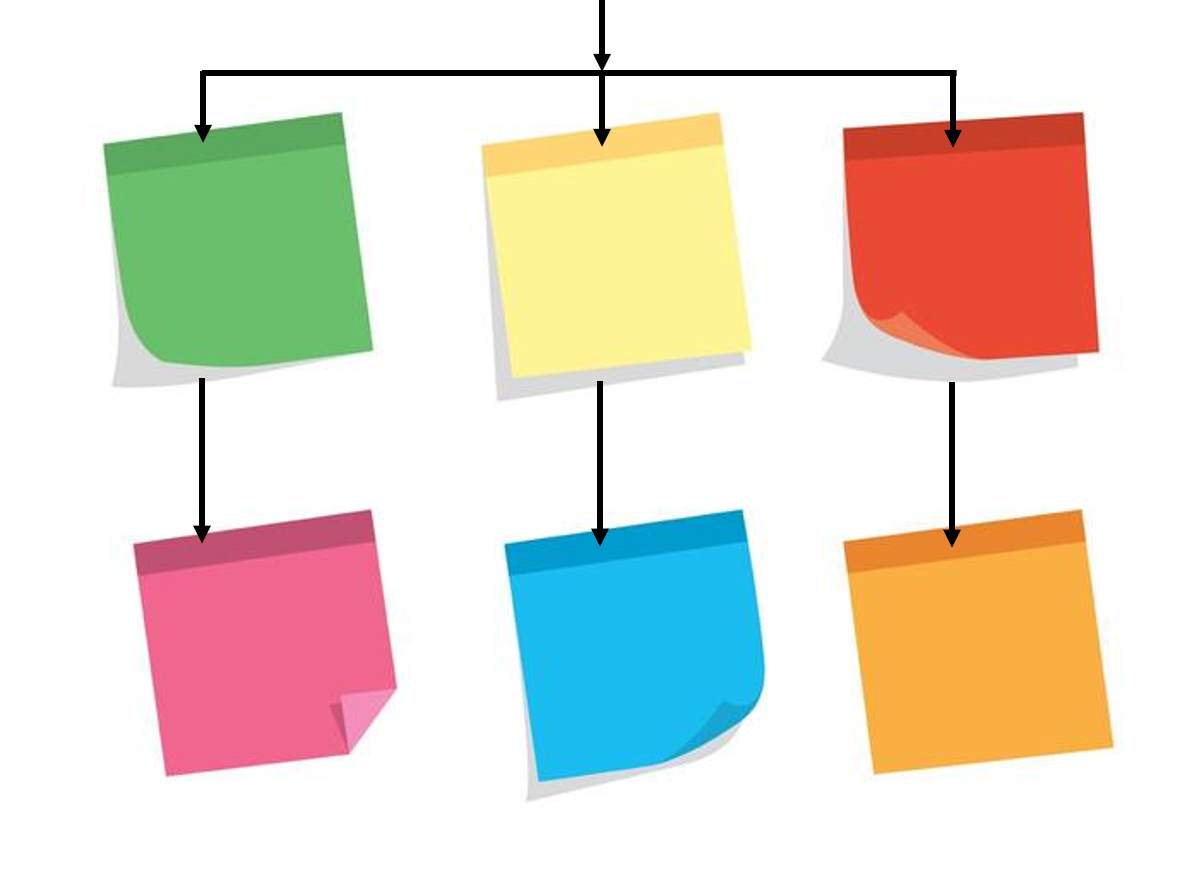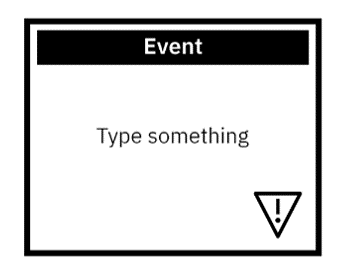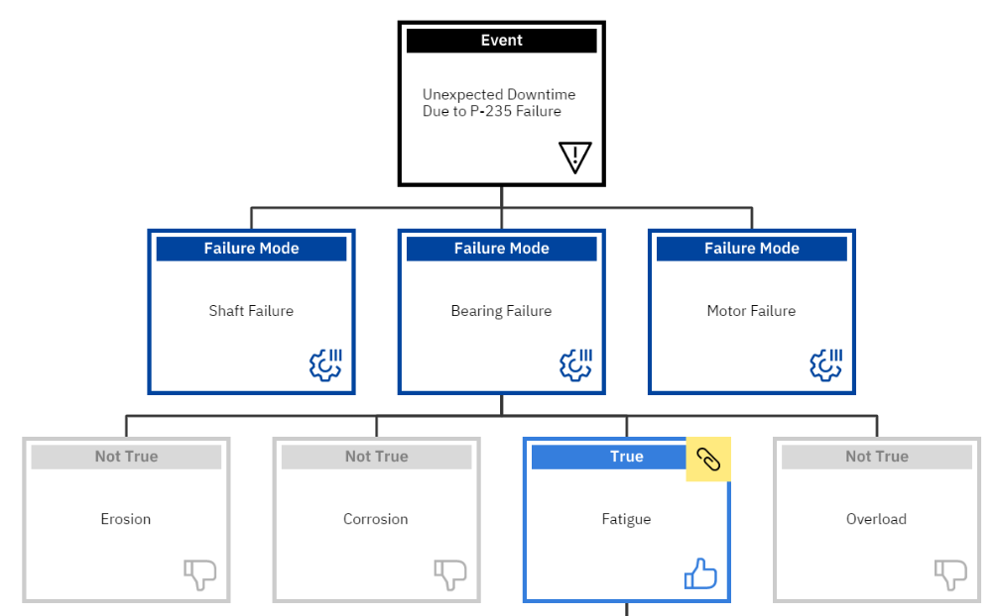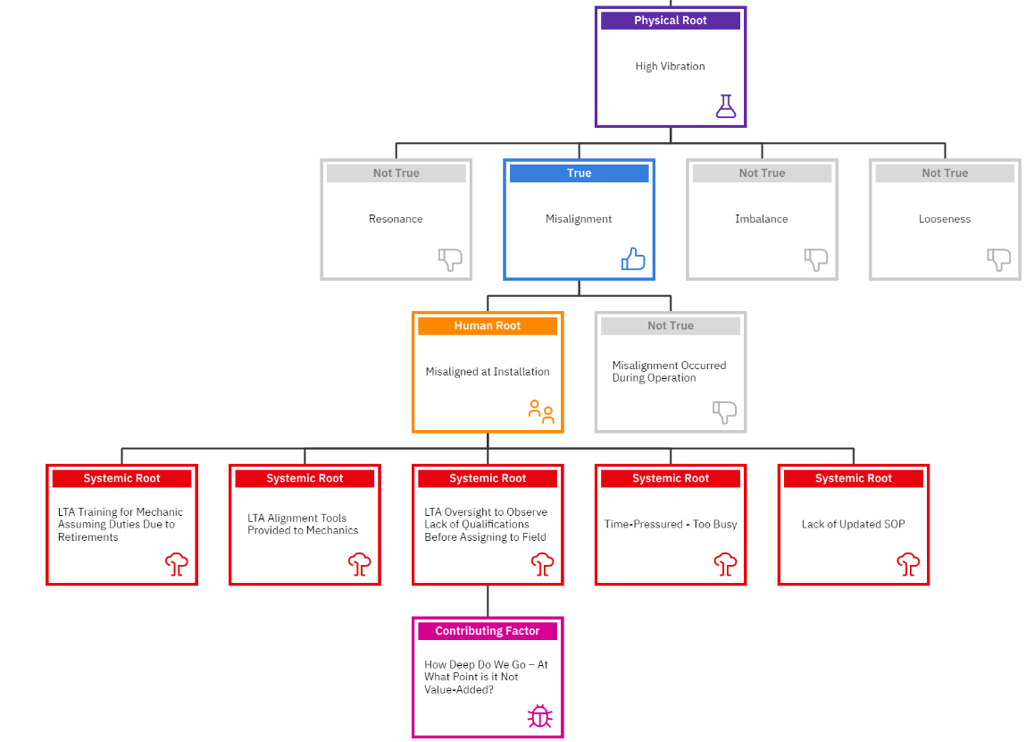
Post-Its: Their Love/Hate Relationship With RCA… Solutions Exist!
WE LOVE OUR POST-ITS!
When I’m asked who our primary competitors are, I quickly and simply reply ‘Post-Its’
(Full-disclosure, ‘Post-Its’ are a registered trademark of the 3M corporation)!
It’s hard to imagine anyone who hasn’t been in a conference room at some point in their career, utilizing colorful, adhesive post-its to help express some form of a logical thought process. Whether it be for brainstorming, process mapping, Reliability Centered Maintenance (RCM) or some form of Root Cause Analysis (RCA), we have become avid fans of post-its to help us produce graphical expressions of our thoughts…WE LOVE POST-ITS!
I personally have the memory of a gnat, so I literally depend on post-its to remind me of the many things I have to do (Figure 1). After all, we don’t want to let anything fall in the cracks. So they serve as a memory aid as well (very effectively I’ll add)!

Figure 1: My Primary Memory Aid
RCA RECONSTRUCTION: IT’S JUST BLOCKS AND LINE
Now let’s look at this from the standpoint of RCA. Whatever graphical expression of RCA we choose to use, there will be, at a minimum, blocks and connector lines. The connector lines will reflect cause-and-effects relationships, as well as directional flows of such logic in the form of arrows. What a perfect application for these flexible pieces of paper. After all, if we change our mind, and choose to restructure the logic, we simply pick up the Post-It and move it to the proper position.

Figure 2: RCA Reconstructions Are Simply a Logical Expressions Using Blocks & Lines
The key drawback to using Post-Its is the fact that once we have constructed our logical masterpiece, some poor soul now has to convert what’s on the wall, to some software application. During this conversion, we also know that sometimes the adhesive on those post-it notes loses its grip over time, and then our logic starts to get fuzzy when we haven’t figured out where in the analysis they dropped from overnight.
Figure 3: The ‘Poor Soul’ in This Pic is My Brother Mark Latino (Unedited:-)
CONVERTING OUR POST-IT MASTERPIECE INTO A COMPUTER
Then, once the analysis is converted into a computer (could be days later) how do we leverage that RCA with all the other ones we have in flat files in our computer? How do we search for trends, like are we finding similar roots? How do we share the logic from analysis to analysis? How do we data mine the data base? These are tough questions because oftentimes, the answer is WE DON’T do any of these.
Looking at this from the big picture, this means that we spend many, many labor hours doing re-work. We solve the same problems over-and-over again at different locations and sites, simply because we didn’t know an RCA had been done on them before.
While many of us may not say this out loud, there is a psychological benefit of constructing such analyses as described (manually). Because to many in leadership, it gives the optics of ‘work’ and ‘collaboration’. After all, I see big pieces of paper on the wall, colorful post-its and people working together to accomplish a common objective. Of course we would have someone in the background recording the analysis in the computer simultaneously, to avoid such re-work.
MOVING FROM PAPER POST-ITS TO e-POST-ITS
Given the few, but significant, drawbacks to using post-its in a conference room, we concluded our software development efforts had to focus on Post-Its as being our primary competitor in the RCA space. We needed to make our RCA software just as easy as putting Post-Its on a piece of craft paper in a conference room.
After all, there is no reason this can’t be replicated. At its core, it’s the creation of blocks and lines. However, how EASY we make it to create flexible blocks and lines, and move them around with ease is the key. The user interface (UI) must get as close to replicating how we use Post-Its, as possible.
INTRODUCING EasyRCA: THE NEW e-POST-IT SOLUTION
When you open an Analysis now in EasyRCA, it’s like a clean whiteboard or piece of easel pad paper, and then an Event block is staring you in the face (see Figure 4). It’s asking you to type something that is descriptive of the Event. With the roll of your mouse, you can make this block as big or as small as you want. You can also move it anywhere on the screen (canvas) that you want. Just like Post-Its, its sitting there waiting for you to place it wherever you want.

Figure 4: RCA Event Using an EasyRCA Electronic Post-It
Now you can add blocks by simply using your Node (fancy name for Block) Tool Bar and then just use ENTER to add new blocks below, and TAB to add new blocks beside your current blocks. Actually the only things you need, to do anything in this whole program, is the two(2) tool bars. Lets briefly describe each of them (see Figure 5). Every time you select a block this tool bar is hovering above asking you if you want to do anything with that block (ePost-It).

Figure 5: The Node (Block) Tool Bar
I’ll describe these but they are pretty self-explanatory with the roll-over labels:
ADD – Adds a new block underneath the selected block
DELETE – Deletes selected block and any blocks beneath it
CUT – Cuts selected block and then we can Paste it under another block we select
COPY – Copies selected block and then we can Paste it under another block we select
ROOT LABELS – Select a block and re-label it as a Physical Root, Human Root, Systemic Root, Contributing Factor or Corrective Action.
VERIFIED – Indicates that evidence has been entered proving the Hypothesis is either True or Not True
TRUE/FALSE – Indicates via a thumbs up or down that the selected block is true or not
HIDE – Hides selected blocks and anything beneath it (feature made for larger analyses)
CONNECTOR – Draws a dotted line laterally to parallel blocks to indicate a relationship exists
ATTACHMENTS – Indicates attachments are attached to the selected mode (files, videos, links) and entered as evidence
All of these options apply to whatever selected block (ePost-it) we have chosen. It’s as simple as manipulating regular Post-Its, along with some ‘turbo’ options. Such options include attaching evidence and using visual graphics to tell the analyst if the hypothesis is true or not, and if it has evidence attached (a little paperclip shows up on the block if so). Figure 6 is a sample of what such logic could look like when using the described block options on the block tool bar.

Figure 6: A Sample Visual Expression of Logic Using EasyRCA’s ePost-Its
Applying labels to any block you want is easy as well. Just select the block, choose the label you want on the Node Tool Bar and its just as fast as changing post-its from one color to another, and placing it on the wall!

Figure 7: Changing Block Labels is as Easy as Changing Post-It Colors
The only thing left is to see what that other tool bar was all about. As long as we understand what these two tool bars do, that is all the training one needs to do RCA in EasyRCA, any way they want to. Let’s take a look at this second tool bar and see what it’s all about (see Figure 8). The second tool bar does what Post-Its can’t do.

Figure 8: The ‘Tree’ Tool Bar
Options on this tool bar do not relate to specific blocks, but rather to options available for the entire tree (or whatever graphical expression one is using). So let’s take a quick look at how this makes things easier for us analysts.
PALETTE: Clicking on this allows the analysts to remove a faint grid in the background if they want. The analyst can also change the orientation of the tree from top-to-bottom, to left-to-right. There is also an option to reset the tree to the center, in case the team was moving blocks around and they want to set it back to its default position. There is even a feature here for people my age (people with a lot of wisdom of course:-), where the font in the blocks can be increased with just a click of your mouse.
UNDO/REDO: Making errors is in our human DNA, so when we realize we didn’t mean to take that action, we simply UNDO it. Hey, on second thought, maybe I was right….REDO!
EVENT INFO: This is where we initially input all of the information about the analysis when we set it up (analysis name, Event description, Team Members, Impacts, etc.)
ATTACHMENTS: On the Node Tool bar we could enter evidence to prove or disprove our hypotheses. Here we can just see all of the verification information in one location (for the entire analysis).
ANALYSIS ASSISTANT: Coolest feature in the entire program. When a block is selected, if the text in that block matches the text in our PROACT RCA Library (thousands of cause-and-effect relationship), the brain icon on the tool bar will light up orange. Simply click on the brain and review all of the possibilities provided. CAUTION: While this Analysis Assistant is very helpful, we still advocate the best learning from doing an RCA, comes from asking the right questions of your team members and exhausting their knowledge first…THEN check the Analysis Assistant and see if others had thought of anything they didn’t!
DOWNLOAD TREE IMAGE: Your boss wants to see a quick measure of your RCA progress, NOW! Click this button, it will make a .PNG of the Tree Image, and then you can send it right to the boss…EASY!
DOWNLOAD REPORT: Your boss said the Tree Image was not good enough. He/She wants to see a status report. No problem, click this icon and your current report will print out in WORD and you can email it to your boss. By having the default report in WORD, the analyst can dress it up way they want, in an effort to standardize it for their company.
NOTE: Also in EasyRCA, if you simply click on the URL, you can send that to your boss and they can actually see your analysis. They can’t modify anything (read only), but they can review it themselves if they want. No license is required just to be what we call a ‘viewer’!
CONCLUSION
My purpose in writing this blog was to: 1) try and reduce/eliminate the re-work associated converting a Post-It analysis from a conference room wall, into a computer AND 2) to ensure all RCA’s end up in one (1) database so the analyses can be mined for common trends.
Also this allows others to search the database to see who else may have already done an RCA on the failure I’m experiencing. Think of how much this alone would translate into hard savings when you consider just the labor hours involved with conducting effective RCAs….it’s literally millions of dollar/year we waste! Calculate it yourself if you want to use our Chronic Failure Calculator (CFC).
We purposely designed our latest RCA software solution to be 1) so easy to use, it would require no training, 2) just as easy as using Post-Its, 3) accommodating of most any RCA methodology (supports 5-whys and Fish bone Analyses as well) available and 4) visually digestible; anybody could read the ‘story’ the analysis was telling them by simply looking at it!
If you suffer from any of the pains I have described related to performing RCA’s using Post-Its, check out EasyRCA, it will make your RCA life much less stressful!! There is no need to end up like the analyst in the picture above (Mark Latino)….EasyRCA is here to save you:-)
EasyRCA Website – https://easyrca.com/
About the Author
Robert (Bob) J. Latino is former CEO of Reliability Center, Inc. a company that helps teams and companies do RCAs with excellence. Bob has been facilitating RCA and FMEA analyses with his clientele around the world for over 35 years and has taught over 10,000 students in the PROACT® methodology.
Bob is co-author of numerous articles and has led seminars and workshops on FMEA, Opportunity Analysis and RCA, as well as co-designer of the award winning PROACT® Investigation Management Software solution. He has authored or co-authored six (6) books related to RCA and Reliability in both manufacturing and in healthcare and is a frequent speaker on the topic at domestic and international trade conferences.
Bob has applied the PROACT® methodology to a diverse set of problems and industries, including a published paper in the field of Counter Terrorism entitled, “The Application of PROACT® RCA to Terrorism/Counter Terrorism Related Events.”
Recent Posts
How to Use PROACT® for Root Cause Analysis: A Structured Approach to Problem Solving
5 Whys Root Cause Analysis vs. Logic Trees: Which One Works Best?
Root Cause Analysis Example: From Incident to Insight in 5 Steps
How Root Cause Analysis Training Builds a Culture of Reliability
Root Cause Analysis Software
Our RCA software mobilizes your team to complete standardized RCA’s while giving you the enterprise-wide data you need to increase asset performance and keep your team safe.
Root Cause Analysis Training

